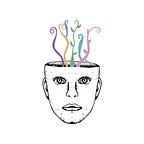The process of stress explored through two different models
In 1936, Hans Selye designed a 3-stage model to help explain the process of stress and how we respond to it. From his research, he found that the body places a huge importance on maintaining a healthy balance at all time. If there is an imbalance, the body seeks to readdress this as quickly as possible by releasing hormones into the system, in the hope that the stress can be overcome in a matter of minutes.
Stage one is the alarm stage. This is where an alert is sent around the body to prepare for a threat. The resulting emergency reaction is often called the flight or fight response, as adrenaline and cortisol are produced to give you greater strength, energy and heightened awareness.
Stage two is about resistance. The body is now as ready as it will ever be to resist the stress, but it cannot do so for long before it becomes weakweakens.
If the stress continues for some time, the third and final stage is likely to be exhaustion. Here the body cannot resist the stress any longer, as it is wiped out. Ideally at this stage, the body is looking to repair itself as soon as it can. If this is not an option, the body is in danger of facing burnout.
Signs of burnout.
Just because you are coping doesn’t mean you are necessarily okay.
Burnout is the effect of being immersed in stress for a long time. Burnout can be revealed through bodily sensations, feelings, actions or thought processes. Here are some examples:
· Being being consistently less productive and less able to sleep
· Becoming more irritable, apathetic, detached from the world
· Getting overwhelmed with feelings of hopelessness and despair
· Becoming more tired and drained and lacking in energy
· Increased susceptibility to illness
· Becoming forgetful, angry, depressed and anxious
· Being less enjoyable for others to be around
Richard Lazarus had another way of looking at stress, using a 2-stage approach that he developed in 1984.
He saw the process of stress and our response to it as dependent on:
(i) the type of person we are;
(ii) how we size up the stress we face;
(iii) the environment we are in when we are stressed, and
(iv) the coping methods that are available to us at that moment in time, be they our own internal methods of coping or anything external that may help or hinder us (like another person, say).
Exams, operations, separations, public speaking, new jobs. According to Lazarus none of these needs necessarily be stressful as a matter of course. We make them stressful, by loading them with our own hopes, fears and worries. We make them stressful by defining them as stressful.
In his model, it is the perception of stress that is of more interest than the actual stress itself.
If we think something is stressful, it will become stressful. If we don’t, it may not. For some people, say, there is a fine line between excitement and anxiety. A person could be excited but define it (or misinterpret it) as anxiety — or vice versa.
Lazarus splits up our perception of stress into two stages:
The primary appraisal stage is all about deciding if an event or a situation is stressful or not, or whether it is insignificant, or perhaps of benefit, or possibly mildly annoying, etc.
If it’s deemed to be stressful, in what way is it stressful?
Here you may be asking questions based on something that has already happened. For example: how dangerous is the harm of the illness/injury? How much blood has been lost already? Or you may be sizing up a potential threat to your well-being, such as walking down a dark street at night. Or you may be working out what you have in your own locker (or, say, your own toolkit) to overcome a potential challenge.
The secondary appraisal stage follows on from the first stage. Here a notion is formed as to how well you are going to cope with the stress from the harm-loss-threat-challenge. If you are confident you can cope, your stress will go down. If you are not so sure, your stress levels might go up.
Acknowledging the need to find a coping strategy is a recognition that we do not have enough resources available to manage the stress.
Needing to find a coping strategy puts us into two possible camps:
Problem- focused coping looks at ways to solve the issues that are causing and creating the stress. This could involve some sort of planning or changing the way you do something.
Emotion-focused coping looks at ways to manage the emotional response of the stress. This could involve avoiding certain situations, or it could be to actively engage in something.
For example, consciously spending more or less time with your family members.
Finally, another way of dividing up your coping options is to look at whether or not you have a positive or negative outlook on the matter at hand.
For example, one outlook of anxiety is overestimating danger and underestimating your ability to cope. Another maybe that it’s game over.
If you are interested in some of the ideas this article has raised, you may wish to visit www.selfdetective.net
This is an extract from the book Self Detective: Coping Strategies which is available at Amazon
